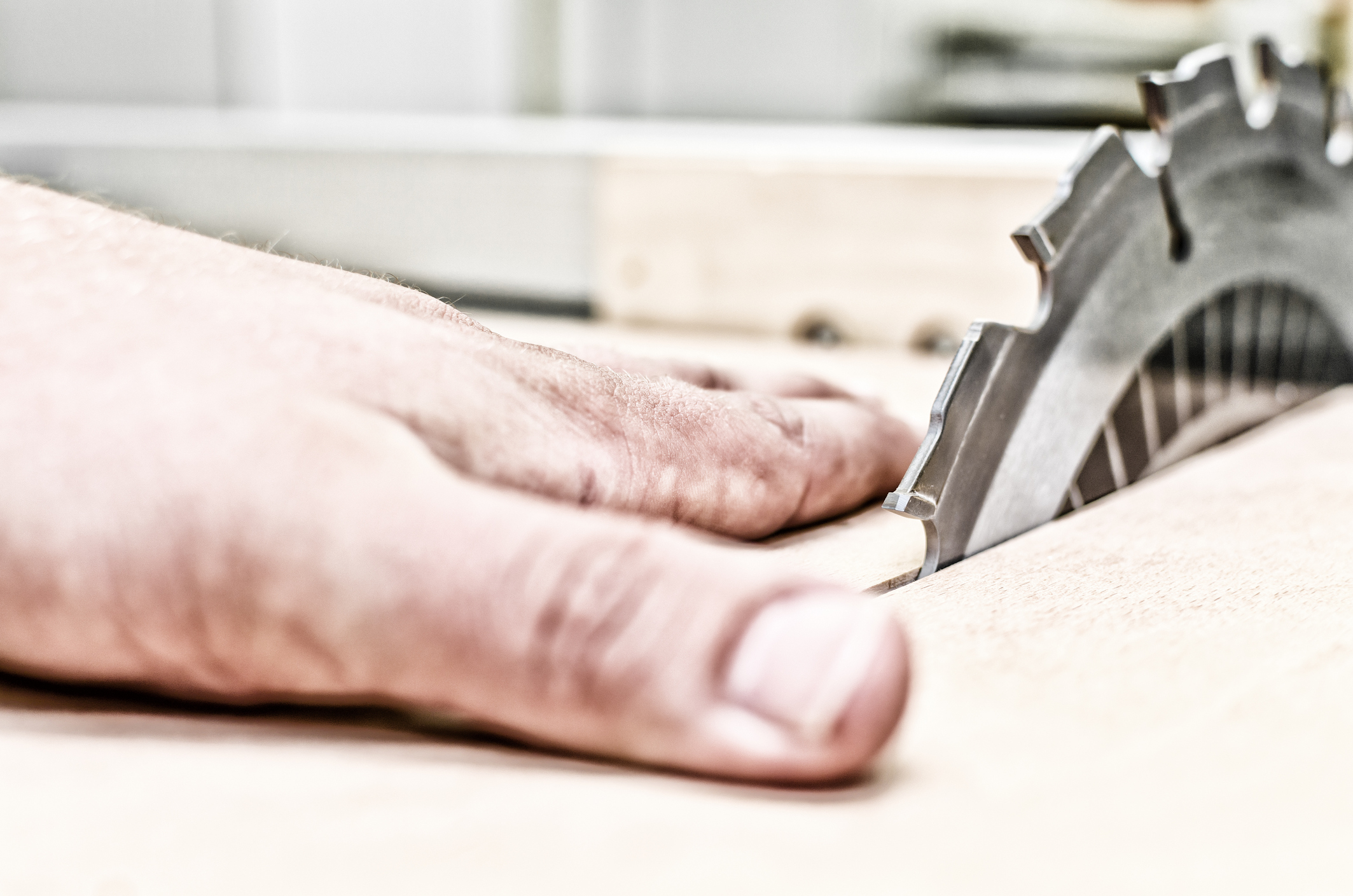As construction occupations go, joinery manufacturing probably doesn’t strike you as one of the more dangerous. You’re indoors, you’re not working at height, you don’t have to contend with weather – but even in a workshop, you might be surprised by the number of potential hazards (and we’re not just talking about accidents with the table saw).
Here’s a quick look at five common workplace hazards for joiners, as well as some smart suggestions to help you avoid them.
1. Respiratory problems
Whether you’re a joiner or a carpenter (and if you don’t know the difference, you’re on the wrong blog!), your day-to-day is a dusty business. Joiners in a workshop, however, are at higher risk of respiratory irritation for several reasons. First of all, you’re indoors, which means artificial ventilation and dust extraction is required to make sure the air you’re breathing is clean. Secondly, the materials you use on a daily basis – such as chipboard and MDF, are made of smaller particles that generate dust more readily. Last but not least, while carpentry is an industry of nails and screws, joinery has many more adhesives in the mix – and these carry their own risks for lung health. To safeguard your lung health at work, there are a number of things you and your employer can do. Firstly, ensure the workshop is adequately ventilated and that dust extraction systems are working correctly, with regular servicing and filter changes. Make sure you wear protective equipment such as a respirator mask when completing dusty jobs, and aim to keep work spaces free from excess dust accumulations. When selecting adhesives, avoid chlorine-based formulations, which carry known health risks. Tensor’s range of DCM-free adhesives offer the same reliable performance, without the danger to your lung health.
2. Hand-arm vibration syndrome
Hand-arm vibration syndrome or HAVS is a condition that affects many people in the construction industry, but particularly joiners. It’s caused by prolonged use of vibrating machinery such as drills, power saws and orbital sanders. HAVS causes symptoms such as tingling and numbness in the fingers; loss of strength in the hands; poor circulation, and red, painful burning of the fingers. It can lead to Carpal Tunnel Syndrome which can cause pain and weakness in the hands, which may interfere with your ability to work safely. If not addressed, these symptoms can become permanent. HAVS risk can be reduced by ensuring low vibration tools are used; by taking regular breaks from vibration tools, by not gripping the tool too tightly; by ensuring tools are stored so they the handles do not get very cold, and by promoting good circulation through regular exercise, stretching and wearing appropriate clothing in cold conditions.
3. Repetitive strain injuries
In any job, performing the same tasks over and over again carries a risk of repetitive strain injury. In workshop joinery, these are often related to bending, hunching, reaching or lifting. To prevent RSI, you should be aware of your posture when carrying out repetitive tasks and take steps to reduce any action that causes excessive strain on your back, neck, shoulders and arms in particular. An example of a repetitive process is applying adhesive to a surface using a scraper or roller, especially if you have to stretch across a wide sheet. Switching to a spray system like Tensor means you can maintain a neutral posture while still achieving a fine coat weight of adhesive on the surface.
4. Lacerations
Occasional cuts are regarded as a hazard of the job for joiners, but serious lacerations have the potential to be career ending, or even fatal. It’s vital that joiners follow all safety procedures when cutting sheet and other materials in the workshop, to reduce the risk of serious accidents where cutting blades are involved. These include: ensuring blades are kept sharp, eliminating the need to use force when cutting; using high quality PPE that maximises comfort without sacrificing protection; ensuring all snag hazards are removed, including any loose clothing and jewellery; and keeping staff training up-to-date, so joiners understand the importance of not operating machinery when they are tired or unwell, how to work the safety features of cutting machinery, and what to do in an emergency.
5. Eye injuries
Eye injuries are the most common injury reported in joinery workshops. They can occur as a result of dust or chemical irritation, or when a foreign body such as a splinter enters the eye. Prevent eye injuries in the workshop by making sure appropriate, comfortable goggles are available and worn when high-risk tasks are being undertaken, and by avoiding chemicals like dichloromethane in adhesives, which can cause serious eye irritation. Make sure you know where eye wash stations are located, and how to use them if an accident does occur.
To find out more about TensorGrip’s range of safer adhesives and how they can safeguard occupational health in your workshop, get in touch.
